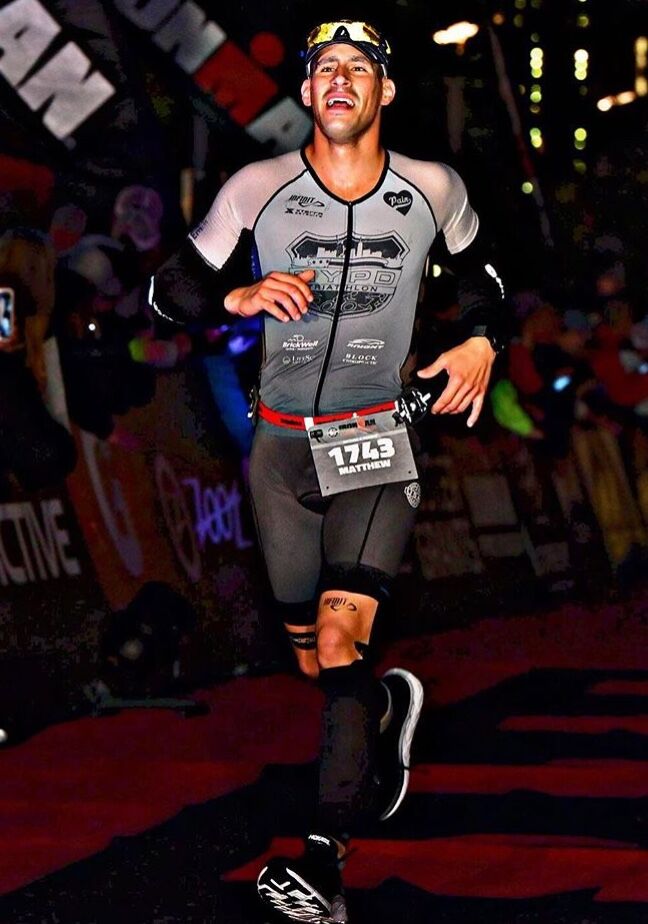Running Training and/or Rehabilitation in Smithtown and Selden, NY
According to the Running USA data analysis in 2018, there were approximately 18.3 million runners that participated in races. The year before had 18.5 million runners – indicating that road races are thriving in the United States. They say nearly 60% of those participants are women, and the most popular event is the 5k (3.1 miles) followed by half marathons (13.1 miles). With this many people running, it is important to discuss injuries related to running. According to Callahan (2019), there is a 19.4-79.3% incidence of lower extremity injuries reported in runners. The most common diagnoses involve the knee and lower leg and include patellofemoral pain, shin splints, stress fractures, Achilles tendonitis, and iliotibial band (ITB) syndrome. Additionally, we at Block Sports Chiropractic & Physical Therapy have noticed a high incidence of hip flexor tendonitis and low back pain as a consequence of running.
Despite its risk of musculoskeletal injury, it is also beneficial for several other reasons. According to The Mayo Clinic, running has been linked strongly to decreased risk for all-cause mortality, hypertension, diabetes, respiratory disease and some types of cancers. Additionally, it is beneficial in decreasing the risk for hip osteoarthritis and the need for replacement. However, it is important to note that the same researchers suggest not over-training as well. There has been a low-moderate increase in the risk of arterial hypertrophy and cardiotoxicity and cartilage damage for those who run marathons, ultramarathons, and triathlons. Therefore, it has been suggested that 150min/wk of moderate running/walking intensity or 75min/wk of high-level vigorous exercise be the guidelines.
The rest of this blog will focus primarily on the musculoskeletal risk factors that may contribute to the aforementioned possible injuries caused by running. At Block Sports Chiropractic & Physical Therapy, we see several running injuries in Smithtown and Selden, NY with some common predisposing factors that can be prevented! Of course, there are internal characteristics that leave one predisposed, but there are several muscles and joints that can be healthier to prevent injury during training and running.
Running Mechanics:
Running can be broken down into four phases: 1) Preparation, 2) Contact, 3) Backswing and 4) Frontward swing.
- Preparation – This is when the front foot is about to hit the ground. During this phase, the leg is moving from maximum hip flexion to the beginning points of hip extension for contact. This is when the runner is completely in the air with no contact with the ground from either front or back leg.
- Contact – The point at which the front foot first hits the ground. Ideally, you want to hip the ground with the foot directly under, if not JUST SLIGHTLY in front of the hip. It is controversial as to whether initial contact should be at the heel, midfoot or forefoot.
- Backswing – The foot now leaves the ground again to extend behind the body. Maximum hip extension is required for this phase. It is important to note that during this phase, the hip and leg are preparing again for the frontward swing.
- Frontward swing – The leg moves from the greatest point of extension to maximum hip flexion (beginning of the preparation phase).
Throughout the phases, the core and upper body want to remain strong as well. Arms should be at approximately 90deg of elbow flexion and should not cross the body but remain parallel to trunk. The trunk should not be hunched forward and the neck should remain erect, with ears in line with shoulders.
Despite there being general phases that must take place, ideal running mechanics are different for each person. Some researchers argue that midfoot and forefoot contact is the safest and most efficient, and others say heel-striking is not as problematic as once believed. Therefore, where you strike is likely a personal preference and it is the reaction from up and down the chain that is more important.
When you strike the ground during the contact phase, your body must react all the way from the head to the toe. You must have a good core and posterior chain strength in the upper half to keep a good upright posture and prevent added stress on your neck, as well as foot intrinsic strength to correctly accept the ground force and immediately react to it. Therefore, our providers look at our runners from all angles.
What we look for:
Some key components we at Block Sports Chiropractic & Physical Therapy look at when it comes to running are as follows:
- Running tall
- In order to run with the utmost efficiency, the trunk and head should remain erect. If the trunk is hunched forward, you are unable to expand the rib cage correctly, leading to increased labored breathing. Additionally, muscles in the ribs, shoulder, and neck are working extra hard in poor positions – leading to increased risk for cramping and muscle spasms.
- Hip extension
- As explained early, hip extension strength is needed during the preparation phase, as well as the contact and backswing phases. When you strike the ground, the foot should be directly under your hip with strong hip extension stability. Furthermore, during the backswing, if there is not enough hip extension range and strength, you are adding significant stress on hip flexors to do more work than normal. Without proper extension, the hip flexors are unable to be loaded properly which leads to poor recruitment and irritation.
- Hip flexion
- Hip flexion strength is very important during the forward swing phase. During forward swing, the hip should reach approximately 90 degrees of hip flexion so that the foot can properly contact the ground underneath the hip while moving backward. When hip flexion doesn’t occur, the contact phase can be altered, adding increase stress on the foot and ankle musculature at contact.
- Knee valgus/varus
- This refers to the angle of the knee during contact. If the gluteus medius (a large hip ABDuctor) is weak, the hips do not remain sturdy as they hit the ground. When this happens, the hips will sink and the knees will buckle in. This can lead to injury to not only the knee but also the iliotibial band due to the added stress put on it for stability.
- Ankle/foot stability
- As stated before, when we hit the ground we have to be stable from the foot all the way up. Without proper strength of the ankle level, nothing up the chain can work or be recruited adequately and safely. The foot must have good plantarflexion strength, both eccentrically and concentrically in order to keep the leg healthy. When weakness occurs at this level, stress fractures in the tibia or the foot can occur.
- Arm swing
- Arms should be directed at the side with elbows at 90 degrees and hands/fingers should be nice and relaxed. As explained earlier, when the arms are not working effectively, it can play a direct role in breathing efficiently.
- Core strength
- To keep a nice erect posture, a solid core base is needed. This includes the posterior chain at the shoulder and hip level, as well as the abdomen and low back region. The abdominals must remain strong for landing, as well as breathing while the low back muscles need to remain strong to keep the pelvis in proper alignment while pounding the ground (even though, we should be accepting the ground rather than pounding the ground).
5 major muscle groups Block Sports targets:
- Core
- Planks
- Side planks
- Bridges
- Psoas strengthening
- Hip abductors
- Hip hikes
- Lateral walks
- Posterior chain (legs)
- Split squats
- RDLs
- Step-Ups
- Plantar flexors/Quads
- Toe raises
- ECCENTRIC toe raises (up quick, SLOW back down)
- SL squat with eccentric stress
- Posterior Chain (Upper body)
- Scapular rows
- Serratus Push-ups
- Is, Ys, Ts, Ws
A proper dynamic warm-up and static stretch during cool-down are ideal for keeping muscles healthy and working properly.





